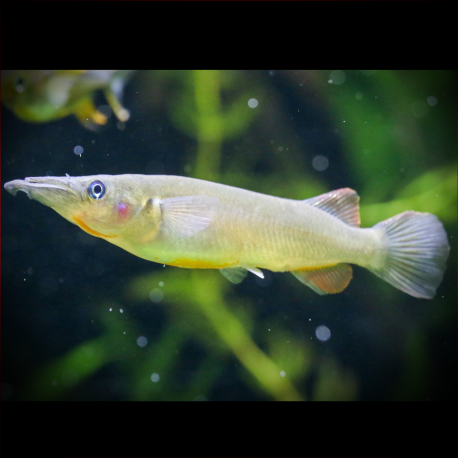More info
Datasheet
| Minimum Tank Size | 120 litres / 31.70 US gallons |
| Maximum Size | 7.6cm / 2.99inches |
| Temperament | Peaceful |
| Care Description | Difficult |
| Temperature | 23.9°C / 75.02°F - 26.1°C / 78.98°F |
| Carbonate Hardness | 8-12 |
| pH | 6.8-7.5 |
General Description
The Celebes Half Beak, belonging to the Hemirhamphidae family, is a lively schooling fish characterized by colorful fins in males and a distinctive black lobe on the lower jaw. Females, on the other hand, possess less colorful fins and may have a red or uncolored lobe. This species thrives in community aquariums furnished with plants, rocks, caves, and driftwood, ideally paired with other peaceful fish of similar size. It is essential to cover the tank as Celebes Half Beaks have a tendency to jump.
Aquarium Setup
For Celebes Half Beaks, a suitable aquarium setup involves a community tank with various decorations. It is recommended to refer to the specific requirements outlined in the table provided.
Behaviour
This species exhibits a peaceful temperament and is known to be very active in a schooling environment. Celebes Half Beaks tend to move about energetically within the tank, and their jumping behavior should be taken into account when planning the aquarium setup.
Feeding and Diet
As carnivorous fish, Celebes Half Beaks require a diet that consists of live foods, frozen foods such as bloodworms and tubifex, freeze-dried options, and high-quality flake foods. It's essential to provide a varied diet to ensure their nutritional needs are met adequately.
Reproduction & Dimorphism
Nomorhamphus liemi, the species under discussion, reproduces in shallow, soft, slightly acidic water. The gestation period lasts approximately six to eight weeks, resulting in the birth of around ten 3/4-inch fry. To nourish the fry, small live food pieces or infusoria should be provided.
Habitat and Distribution
The Celebes Half Beak is native to specific regions and habitats. Their natural habitat preferences and distribution patterns play a crucial role in understanding their requirements in captivity.

